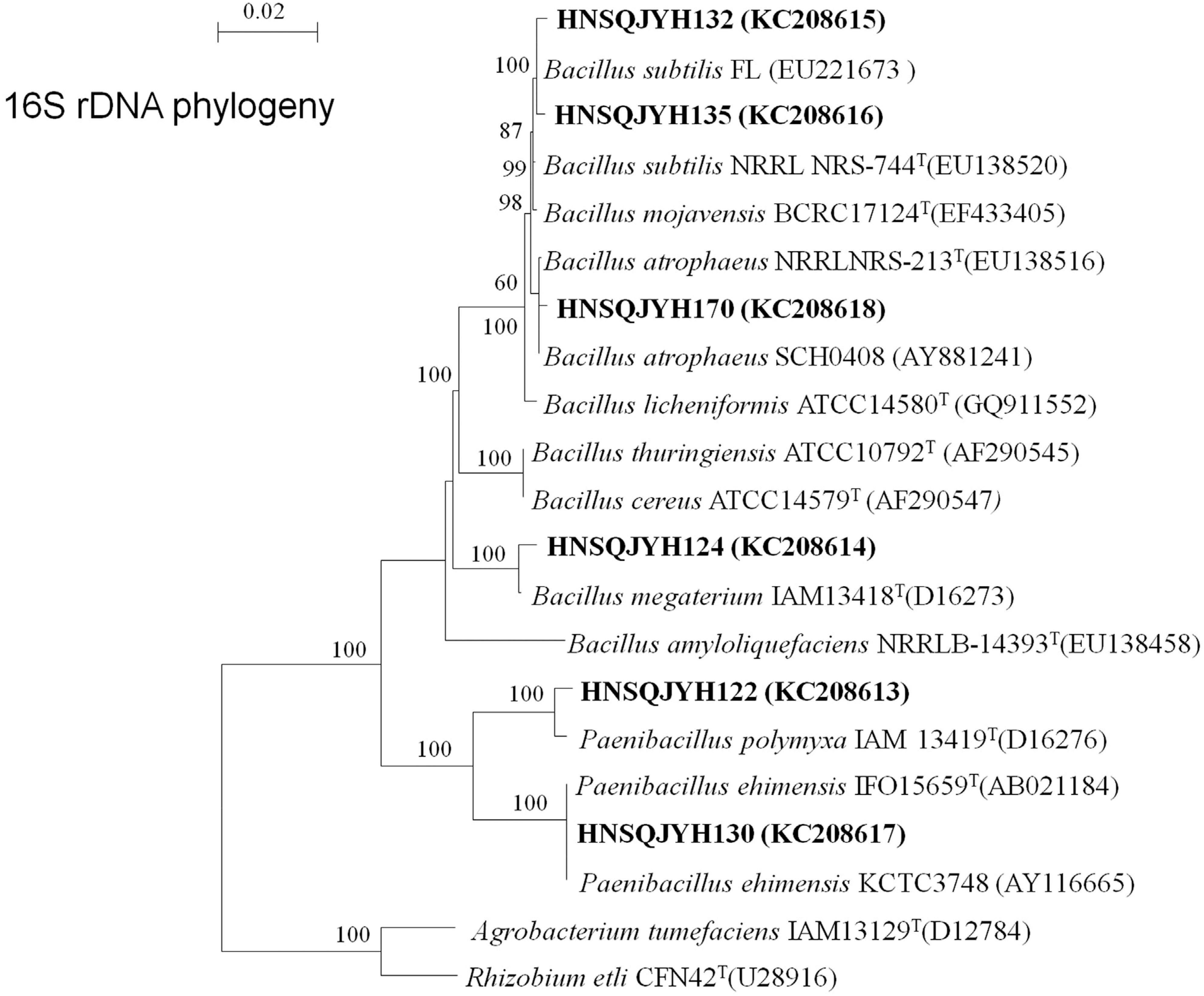Abstract
A total of 48 endophytic bacteria were isolated from surface-sterilized tissues of the medicinal plant Lonicera japonica, which is grown in eastern China; six strains were selected for further study based on their potential ability to promote plant growth in vitro (siderophore and indoleacetic acid production). The bacteria were characterized by phylogenetically analyzing their 16S rRNA gene similarity, by examining their effect on the mycelial development of pathogenic fungi, by testing their potential plant growth-promoting characteristics, and by measuring wheat growth parameters after inoculation. Results showed that the number of endophytic bacteria in L. japonica varied among different tissues, but it remained relatively stable in the same tissues from four different plantation locations. Among the three endophytic strains, strains 122 and 124 both had high siderophore production, with the latter showing the highest phosphate solubilization activity (45.6 mg/L) and aminocyclopropane-1-carboxylic acid deaminase activity (47.3 nmol/mg/h). Strain 170 had the highest indoleacetic acid (IAA) production (49.2 mg/L) and cellulase and pectinase activities. After inoculation, most of the six selected isolates showed a strong capacity to promote wheat growth. Compared with the controls, the increase in the shoot length, root length, fresh weight, dry weight, and chlorophyll content was most remarkable in wheat seedlings inoculated with strain 130. The positive correlation between enzyme (cellulose and pectinase) activity and inhibition rate on Fusarium oxysporum, the IAA production, and the root length of wheat seedlings inoculated with each tested endophytic strain was significant in regression analysis. Deformity of pathogenic fungal mycelia was observed under a microscope after the interaction with the endophytic isolates. Such deformity may be directly related to the production of hydrolytic bacterial enzymes (cellulose and pectinase). The six endophytic bacterial strains were identified to be Paenibacillus and Bacillus strains based on the results of 16S rRNA gene sequencing analysis and their physiological and biochemical characteristics. Results indicate the promising application of endophytic bacteria to the biological control of pathogenic fungi and the improvement of wheat crop growth.
Key words:
Lonicera japonica; Bacillus; Paenibacillus; plant growth-promoting characteristics; endophytic bacterium; wheat (Triticum aestivum)





